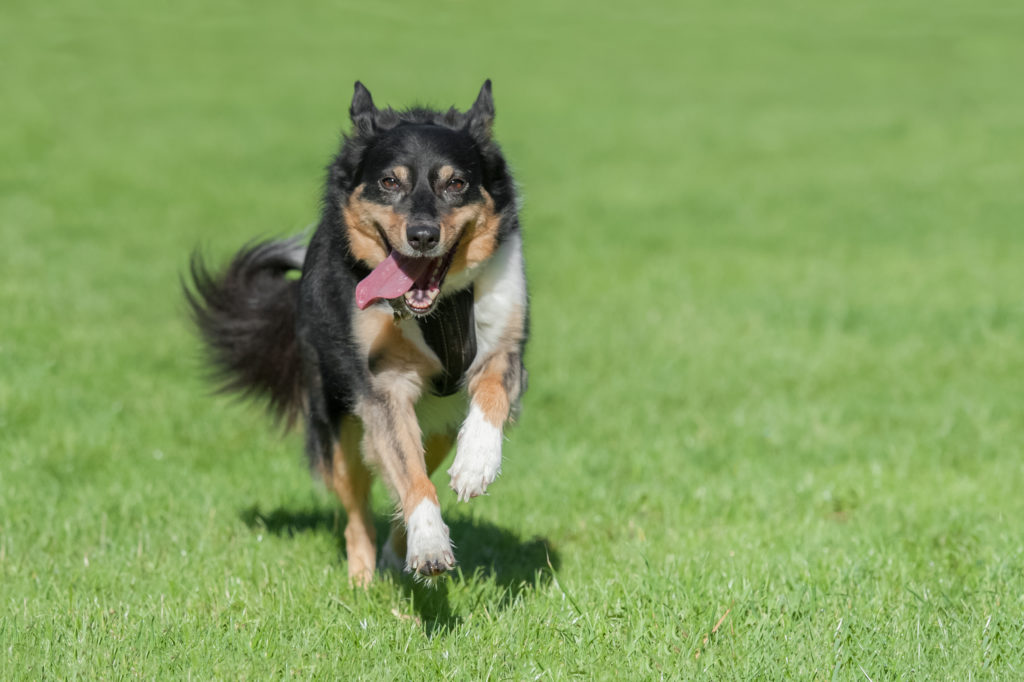Antioxidants have long been known to have risk-mitigating and disease-preventing properties when consumed by humans, but could they also be beneficial for man’s best friend? One such antioxidant, astaxanthin, may play a key role in not only maintaining but enhancing mobility and recovery in dogs.
Before understanding why astaxanthin for dogs can be advantageous, we first have to delve into the antioxidant itself.
What is Astaxanthin?
Ever wonder what gives salmon, lobster, shrimp and other seafood a reddish tint? Well, astaxanthin is a carotenoid, a naturally derived chemical, that is responsible for giving certain plants and animals a red or pink hue. Flamingos’ patented pink-colored feathers can be attributed to astaxanthin. It can also be found in algae and extracted to use in supplements.
As a natural antioxidant, astaxanthin can help reduce the effects of oxidative stress on cells, which contributes to aging and diseases like cancer and dementia. It can also help with inflammatory issues and is often used as a form of treatment for rheumatoid arthritis and carpal tunnel syndrome.
Astaxanthin may also guard cells against damage, stimulate the immune system and protect the heart from a lack of oxygen. It can be taken by mouth or applied directly to the skin to protect against sunburns, fight wrinkles or other cosmetic benefits. The list of proposed health benefits is seemingly endless, but more research is needed to support these claims.
Now that we know what it is and what it can do for humans, here are three key benefits of astaxanthin for dogs.
Oxidative Stress Prevention
Much like their owners, canine cells undergo the natural process of oxidation, too. When free radicals – natural byproducts of ongoing biochemical reactions in the dog’s body – build up, they can lead to oxidative stress. It can cause inflammation, cancer and cognitive disorders in dogs, as well as contribute to the natural process of aging.
By intercepting free radicals, astaxanthin can neutralize them so they don’t interfere with stable molecules in dogs. It has been said that astaxanthin’s free radical hunting abilities are hundreds of times greater than vitamin C, vitamin E and beta-carotene, other known antioxidants. The antioxidant can prevent oxidative stress from damaging cells, regardless of a dog’s age, so it can be taken at any point in a dog’s life.
Muscle Recovery
Repeated bouts of exercise in the form of running, as well as daily walks, can reduce a dog’s muscle recovery over time. Certain dog breeds are also more prone to developing muscle or joint issues, injuries and long-term damage.
Since exercise is another source of free radicals, astaxanthin can help improve activity intensity, muscle strength and muscle recovery in dogs. To learn more about astaxanthin for muscle recovery in dogs, register for AstaReal’s webinar, Enhance Mobility & Recovery in Dogs & Horses with Nature’s Most Powerful Antioxidant.
DNA and Cell Protection
Because of the way astaxanthin positions itself across the entire cell membrane, it’s able to protect the entire cell against free radicals. Since the antioxidant forms an electron cloud around the entire molecule, it absorbs free radicals as they pass by.
By supporting healthy cell division, astaxanthin can protect a dog’s DNA. Differentiating it from other antioxidants is its ability to cross a dog’s blood-brain and blood-retina barriers. I can reach and protect the brain and eyes, as well as the spinal cord and nerves.
Forms and Dosage
Since dogs won’t get enough astaxanthin from diet alone, the best source of the antioxidant is through supplements. Astaxanthin supplements can help fill nutritional gaps that kibble doesn’t provide. A few sources of astaxanthin include ground krill, Pacific salmon, microalgae, oil and chews. It can also be found in a convenient liquid pump format that is odorless and tasteless.
As for the dosage, it depends on a dog’s existing diet and age. As dogs get older, natural antioxidant production decreases and oxidative stress heightens. If dogs are fed mostly kibble, they will not ingest as many antioxidants as they would from a balanced, whole food diet.
While dosage depends on those factors, it is safe to give a dog one to 1.5 milligrams of astaxanthin per 20 pounds of body weight each day.
Still have questions about astaxanthin for dogs and how to source it as an ingredient for canine supplement products? Register for this free upcoming webinar to learn more.







Join or login to leave a comment
JOIN LOGIN